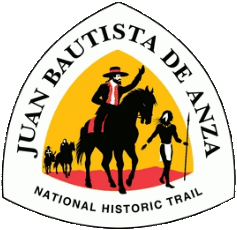News: LHIP: Eduardo Alessio Piaggi

July 9, 2021
The Latino Heritage Internship Program (LHIP), is a National Park Service-funded internship program designed to connect young professionals of LatinX descent to environmental and heritage conservation opportunities. We at the Juan Bautista de Anza National Historic Trail are fortunate this summer to have Eduardo Alessio Piaggio as one of our LHIP representatives. Eduardo is 23 year old graduate student at San Francisco State University pursuing a Master’s in Geographic Information Science. Read below about Eduardo’s insights!
—————————————————————————————————————————————————————-
The Complexity of Trails
Being an intern at the Juan Bautista de Anza National Historic Trail is an interesting experience. The Trail is an ongoing concept that has been laid out by its history, the Anza Expedition, but in the present, it evokes an abstract concept of place that continues to be explored. Ranging from San Francisco all the way to Nogales, it is more than a site: a collection of sites with a common historical theme. The recognition of the Anza Trail is a form of historic preservation and at the same time a way to build continuity with the present. The Trail serves many different purposes nowadays, some segments being hiking trails, paved roads, or populated zones.
But is it only through history that all these separate places have some sort of continuity and are able to be connected? What other types of connections are out there that haven’t been recognized yet? And what should be the narrative for this historic trail, considering different perspectives and changes in opinion through time?
This is why being an intern at the Juan Bautista de Anza Trail is an interesting experience: because it leaves us with so many questions, some of which are answered with more questions. Yet still, that doesn’t seem to be an obstacle, because those questions create more opportunities to explore, look into future projects, and see how the Trail’s history will be carried. Government institutions have the agency to officially recognize a place or carry on with new projects, but the interaction of the public shapes its historical significance, and this type of relationship makes this historic trail be continuous, both in time and space.

